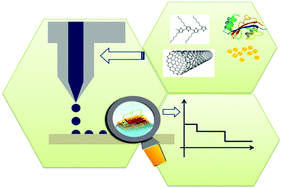Structure of Biomedicine Nanosensors and Nanosensor Sensors (PhD in Nano-Microelectronics)
Note: These sensors were named nano biosensor biosensor due to their nanometer size and their application in environmental environments. Nano-sensors are very small electrodes in nanometer size and cellular dimensions that have become sensitive to the detection of chemical or biological species in cells by fixing certain enzymes on their surface . These sensors are used to detect and quantify species in biological systems. This technique is a very useful way to detect the passage of certain molecules through a cell wall or membrane.
In the aerospace industry, the need for nanochips is self-tracking and nanosensors that are placed in the fuselage of aircraft as a fixed warning system and determine when the aircraft needs repairs. In the automotive industry, nanochips and nanosensors can be used for optimal fuel consumption. Also in expensive cars , these nanosensors can be used to improve the position of the seat and the existing controls to suit different body postures. In the next step, it can be used in information technology to encourage the pervasiveness of always-on computer systems.
Biosensor, and Test of care mode
A biosensor is a group of sensors. These sensors are designed to react with only a specific substance . The result of this reaction is messages that a microprocessor can analyze. These sensors are used to detect and quantify species in biological systems.
These sensors consist of three parts:
A ( bioreceptor or bioreceptor: a biological element) are antibodies, nucleic acids, enzymes, cells, tissues, and other biological substances that can selectively react only with a particular substance.
B) Detector and converter: which acts after the reaction of certain substances with bioreceptors and can determine the type and amount of reaction by various physicochemical methods ) For example by examining electrochemical, optical, mass or thermal changes before and after React (and send appropriate signals to the processor.
C) Signal processors: which are mainly responsible for displaying results and performing sensor calculations.
Biosensors have attracted the attention of many research centers in recent years. Because biosensors are a powerful tool for identifying biological molecules, today they are used in various medical sciences, chemical industries, food industries, environmental monitoring, production.
They use pharmaceutical, health products and so on.
Examples of natural biosensors are the human senses of smell and taste, which detect different odors and tastes, or the immune system, which detects millions of different types of molecules . Biosensors are widely used in medical diagnostics and military science . The most common use of these multi-purpose sensors in military science and medical sciences, including rapid diagnosis of diseases using rapid tests or Test of care, the characteristic of these tests is the speed and cheapness of the test method. With the advent of nanoelectronics and microelectronics science and technology and the possibility of making electrodes on a very small scale, the construction of nanometer sensors was also possible.
Conclusion :
These sensors were named nano-biosensor nanosensor due to their nanometer size and their application in environmental environments. Nano-sensors are very small electrodes in nanometer size and cellular dimensions that have become sensitive to the detection of chemical or biological species in cells by fixing certain enzymes on their surface . These sensors are used to detect and quantify species in biological systems. This technique is a very useful way to detect the passage of certain molecules through a cell wall or membrane.
Researcher and author: Dr. ( Afshin Rashid)
PhD in Nano-Microelectronics




